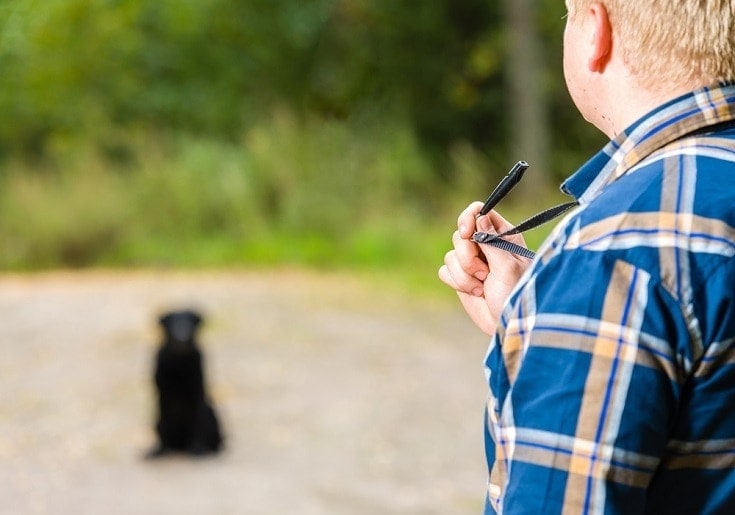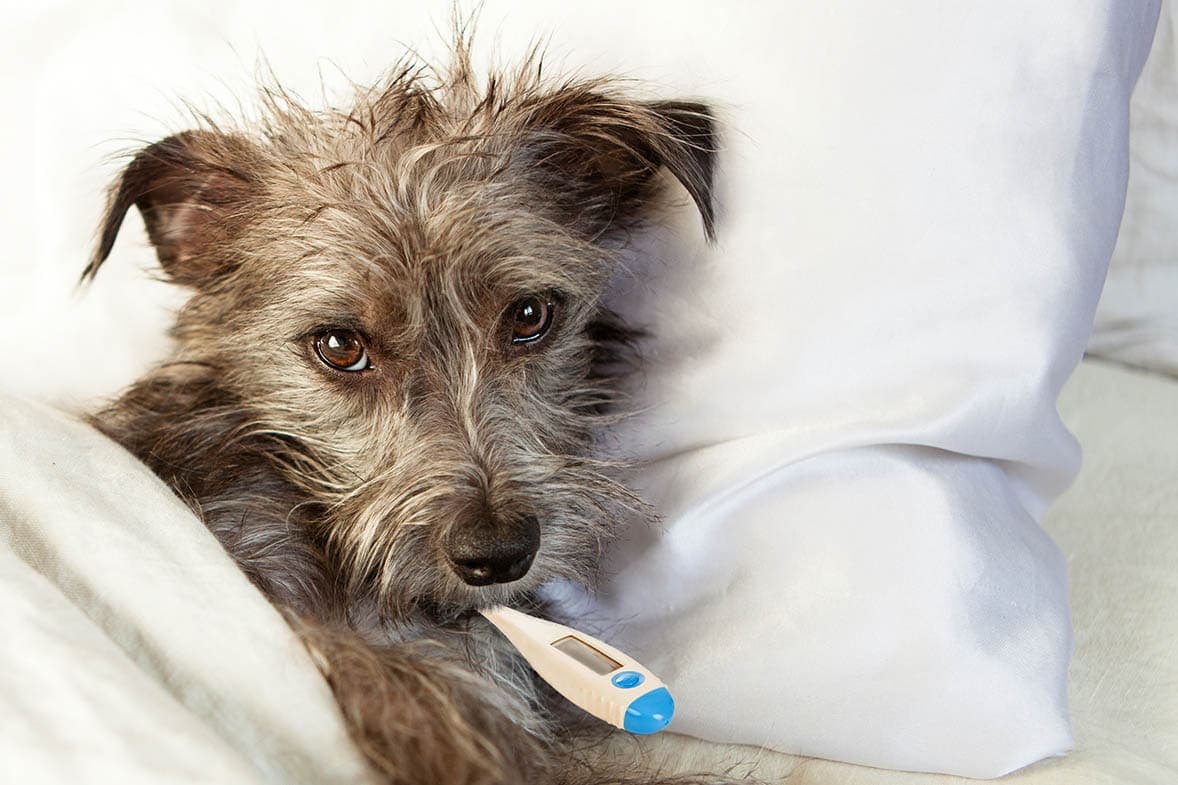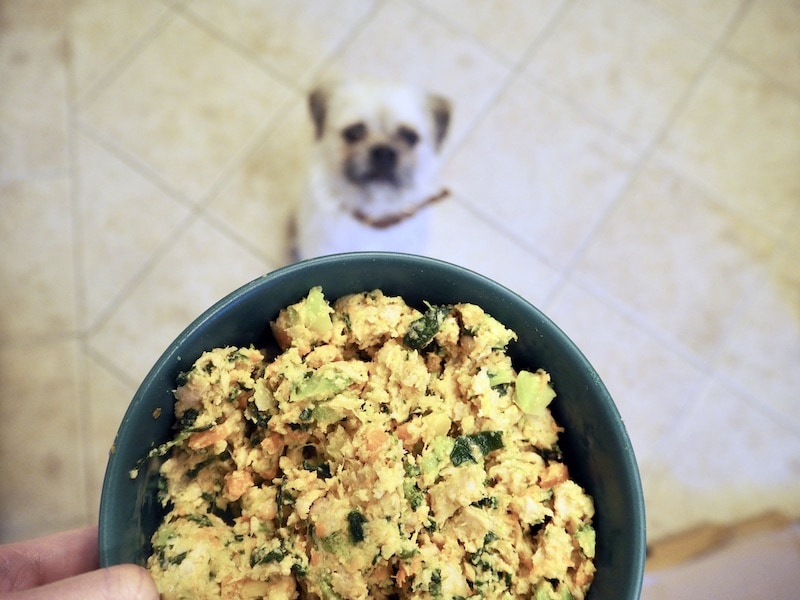What to Do With Leftover Dog Food: Ideas for Wet & Dry Food
Updated on
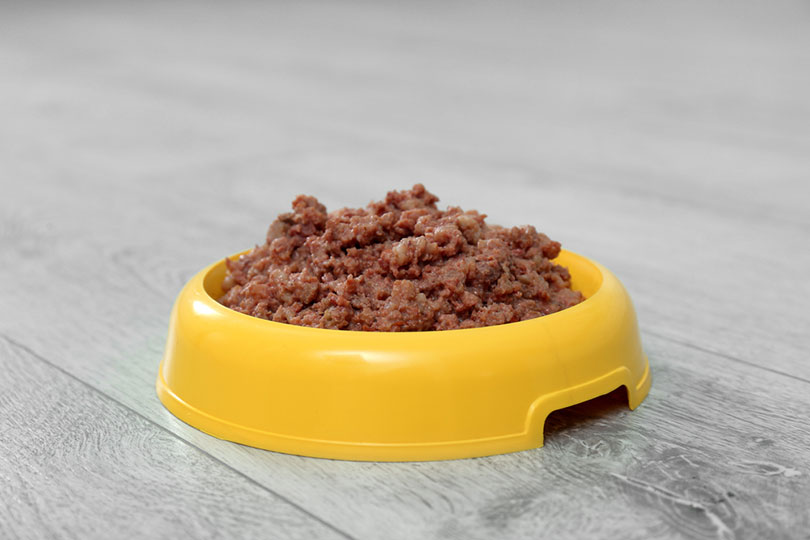
Click to Skip Ahead
You may be wondering what you can do if you notice your dog leaving leftover food in their bowl. Maybe you’re worried that they don’t like their food or are not eating enough. On top of that, you have to figure out just what you can do with the leftover food.
Leftover dog food has several different meanings. It can be the food left behind in your dog’s dish, the opened can or bag of food, or an unopened surplus that you haven’t had the chance to use.
Whether you mix dry kibble with wet dog food, keep a strict wet food-only diet, or only use dry food, the ways that you can preserve leftover food are limited. If your dog is leaving any food in their bowl, you should throw it away. Leaving it out gives it the chance to develop bacteria that can make your dog sick.
Let’s take a look at how you can make leftover dog food last a bit longer.
What Should I Do With Uneaten Kibble?
If your dog has a habit of leaving uneaten dry food in their bowl during mealtime, you have more leeway than with wet food. A good rule of thumb is to throw out any dry food your dog has not finished, but you can get away with leaving the food out if you make sure to store the dog bowl in an area without direct sunlight. If you want to free-feed your dog with dry kibble throughout the day, make sure the food bowl is in a cool, dry location. Also, make sure the bowl is located in areas where insects, vermin, or other animals are not prevalent. We also recommend that you wash and refill the bowl at least once per day.
You want to avoid saving dry kibble for more than a day since it can spoil. It is okay to leave kibble out longer than wet dog food because the lack of moisture helps slow the progression of any bacterial growth. However, any food can turn rancid when left out for too long.
Also, avoid putting the uneaten food back in the same container as the fresh dog food to avoid cross-contamination.
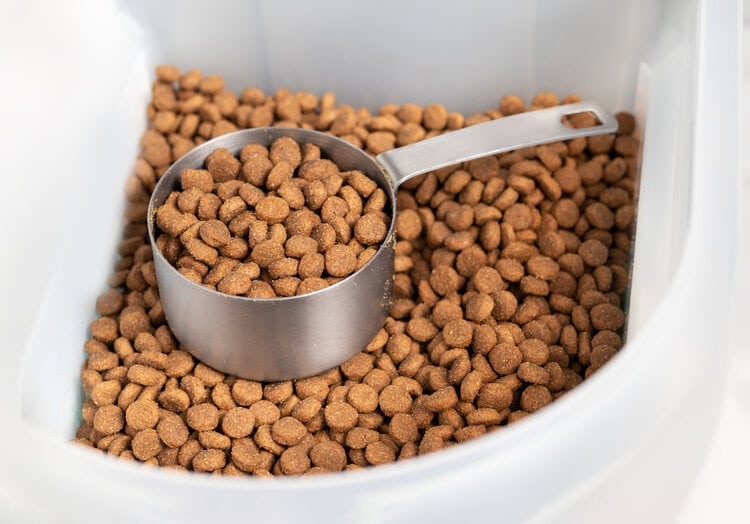
How to Store Dry Dog Food
One way to lessen the chances of bacterial growth and changes in the nutritional value of dry dog food is to ensure that it is stored properly. Proper storage of your dog’s kibble will also prevent your curious and determined canine from getting into their bag and overeating. According to the U.S Food and Drug Administration (FDA), you can follow these tips to store kibble:
- Keep the original packaging. This gives you access to important information like the brand, manufacturer, and best-by date, and it also enables you to provide agencies like the FDA with the UPC code and lot number if it becomes necessary. In addition, the original packaging that your dog food comes in is specifically made to maintain its ultimate freshness.
- If you want to store your dog food in a separate container, put the entire bag into the container. Don’t pour the kibble directly into it; place the entire bag inside, and ensure that everything is properly sealed shut.
- Make sure any container that you use is clean and dry and has a lid that seals tightly to ensure that it is air-tight. You need to wash and dry the container before adding new food.
- Store the dog food in a cool and dry place with a temperature of less than 80 degrees Fahrenheit.
What Should I Do With Uneaten Wet Dog Food?
Wet dog food is trickier to deal with than dry dog food. The moisture in canned dog food makes it more prone to spoiling faster and growing nasty bacteria and mold. Unlike dry kibble, wet dog food should always be removed if left uneaten.
If left in a bowl at room temperature for longer than 2 hours or 1 hour if the temperature is 90 degrees Fahrenheit or more, the food reaches the danger zone of growing bacteria; maggots can also contaminate the uneaten food.
There is a slight chance to save the food if you refrigerate it immediately, and any food left in your can or pouch should always be put in the fridge immediately after opening. Once you have taken the portion you intended for your dog’s meal from the can, it should be promptly resealed using either foil, kitchen wrap, or a special lid designed for the can and then placed back into your refrigerator.
Wash your dog’s bowl after each meal containing wet dog food. Meals should only be served in a clean bowl, as it reduces the risk of contamination.
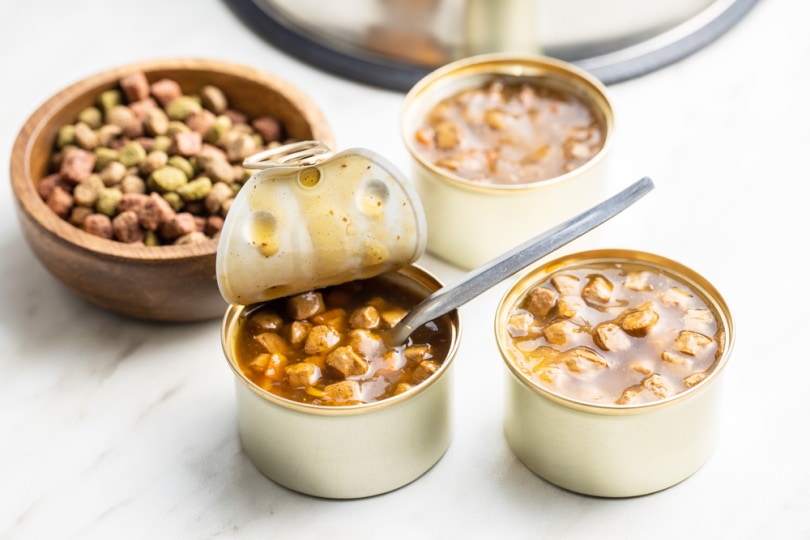
How to Store Wet Dog Food
Much like dry dog food, canned dog food must be stored in a specific environment.
- Unopened cans should be stored in a cool, dry place as long as the temperature is under 80 degrees Fahrenheit.
- Any unused, uneaten, or leftover wet dog food should either be immediately thrown out or refrigerated.
Wet dog food has significantly fewer storage options than dry kibble. If you mix your dog’s wet food with their kibble for meals, the same rules of wet food apply. Any uneaten food should tossed, and any leftovers in the can should be sealed and refrigerated.
When Should You Throw Away Dog Food?
Even when properly stored, dog food will eventually go bad. You should throw out any dog food immediately when it expires. If you are unsure of the expiration date, you need to check the dog food’s original packaging for the best-by date. In addition, if there was a tear in the packaging, the storage container was not sealed properly, or the food was exposed to excessive heat or humidity, it is unsafe to eat.
Kibble should be tossed out after a day of being left in the bowl. Any remaining wet dog food should be thrown out after each meal.
Final Thoughts and Friendly Reminders
While you can leave dry dog food out longer than wet food, any uneaten food should always be thrown out, and unused or unopened food must be properly stored. While there are options for prolonging the shelf life of your dog’s food, you should always do so carefully and with the proper steps to ensure that the dog food doesn’t go bad. We all want what’s best for our furry family members, and feeding them fresh food is always a great place to start.
Featured Image Credit: New Africa, Shutterstock


